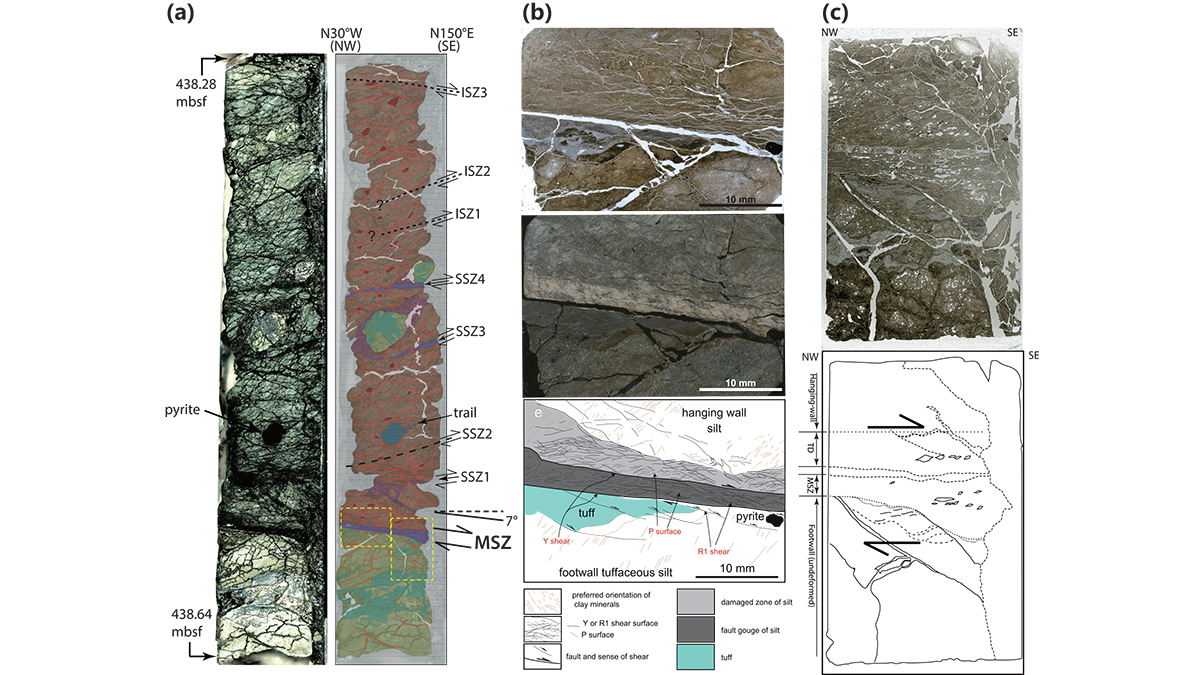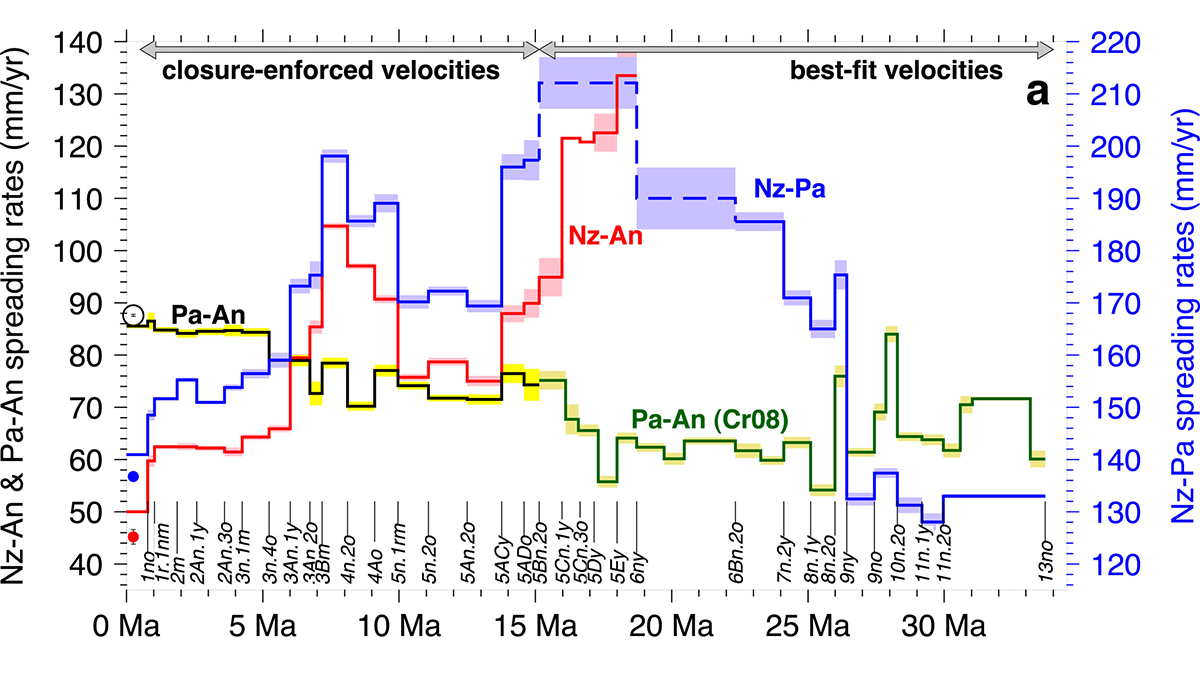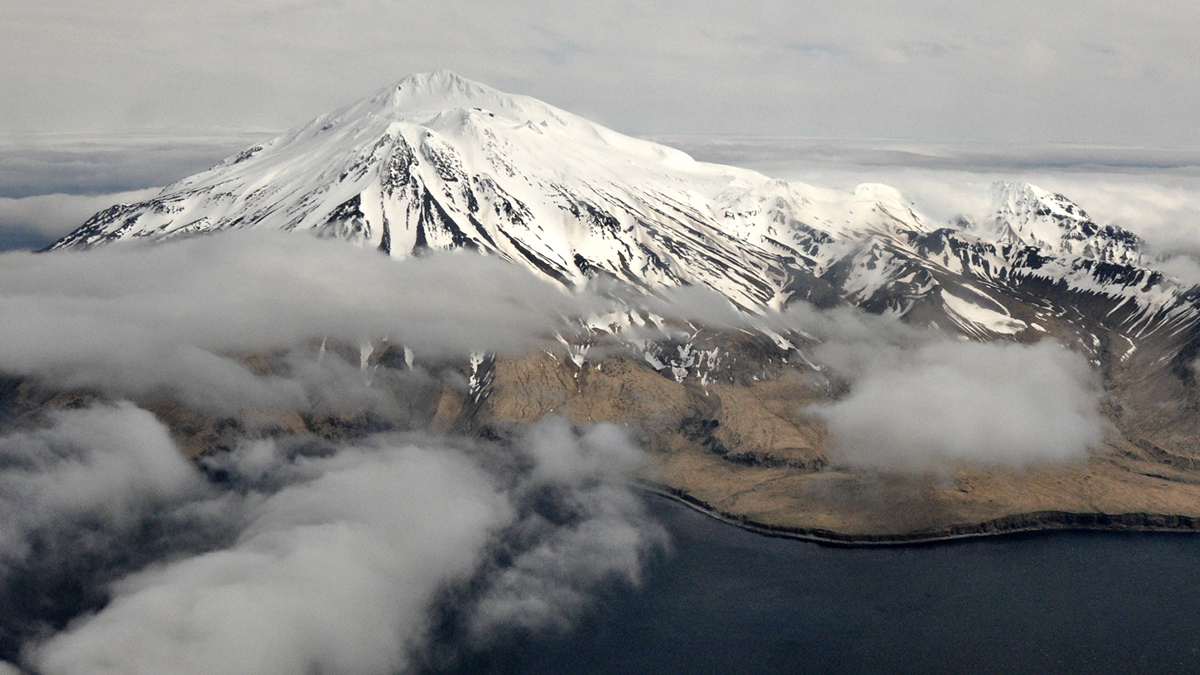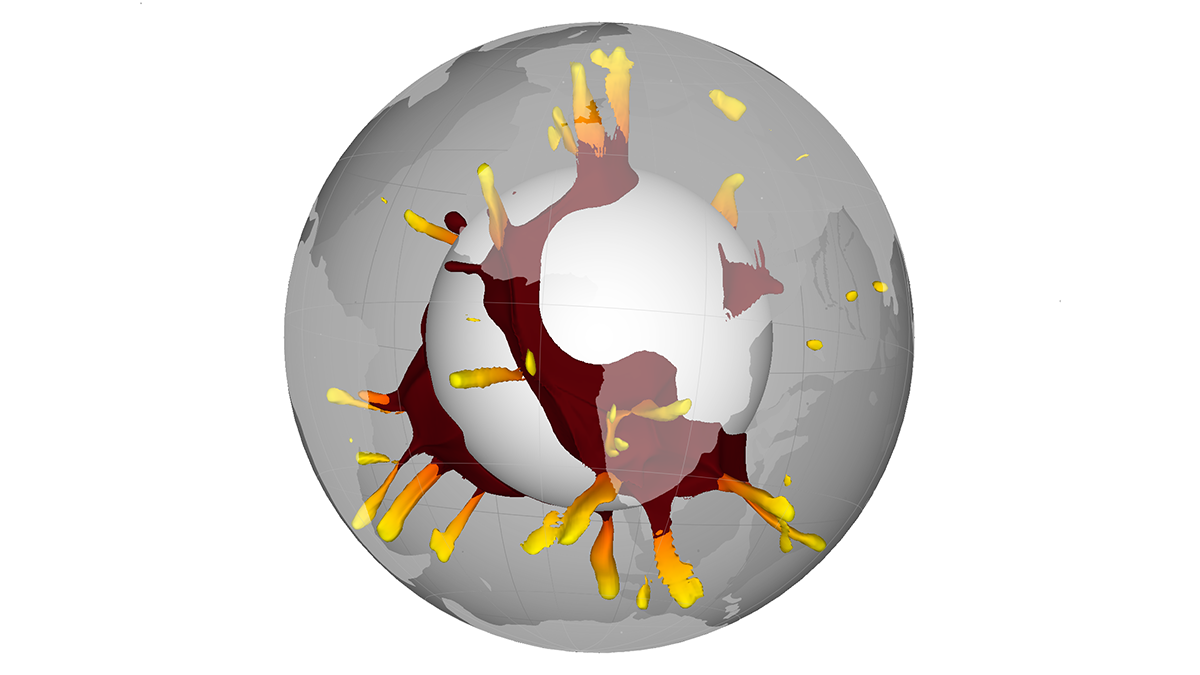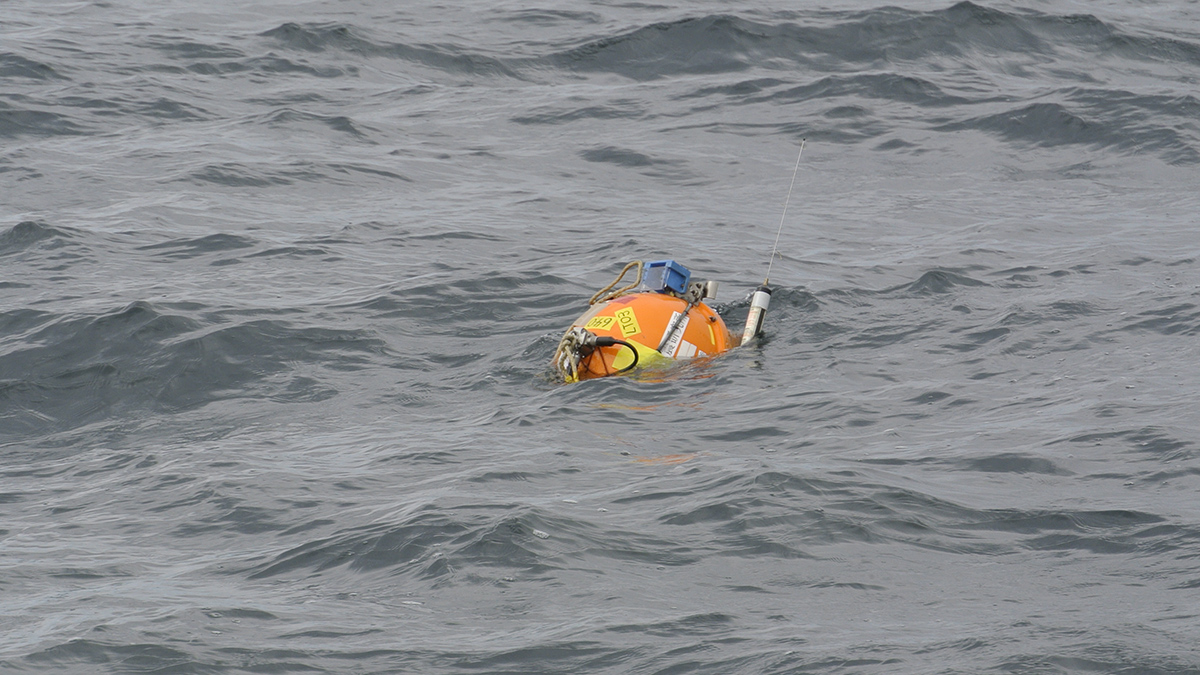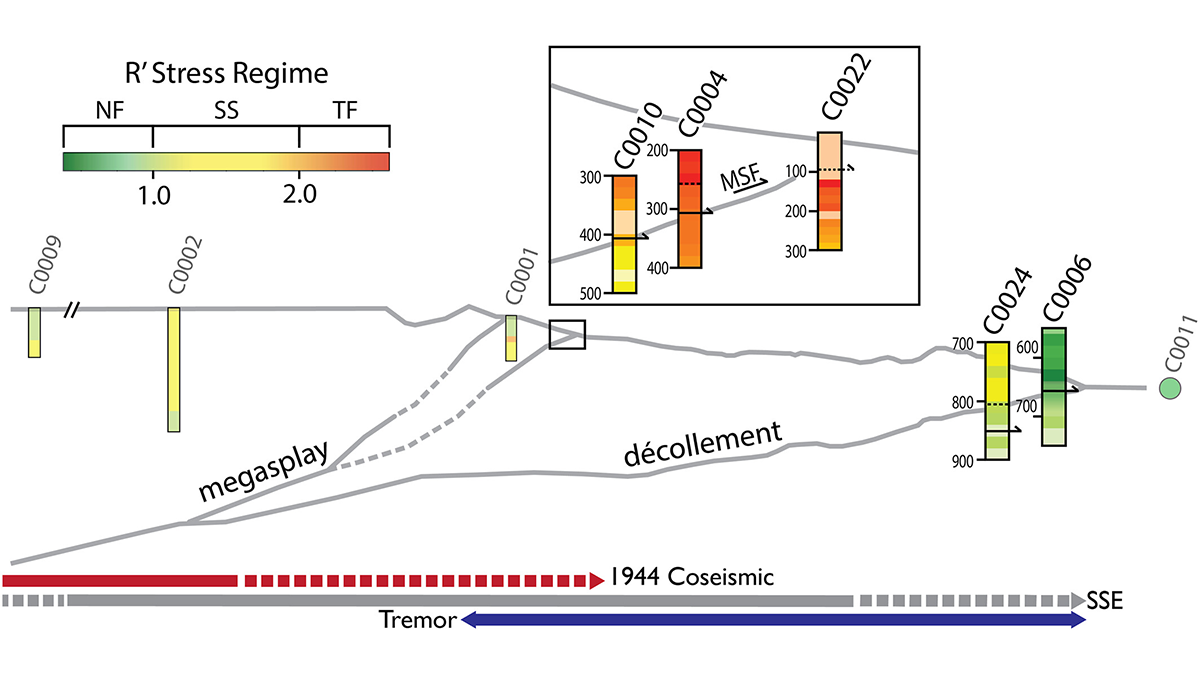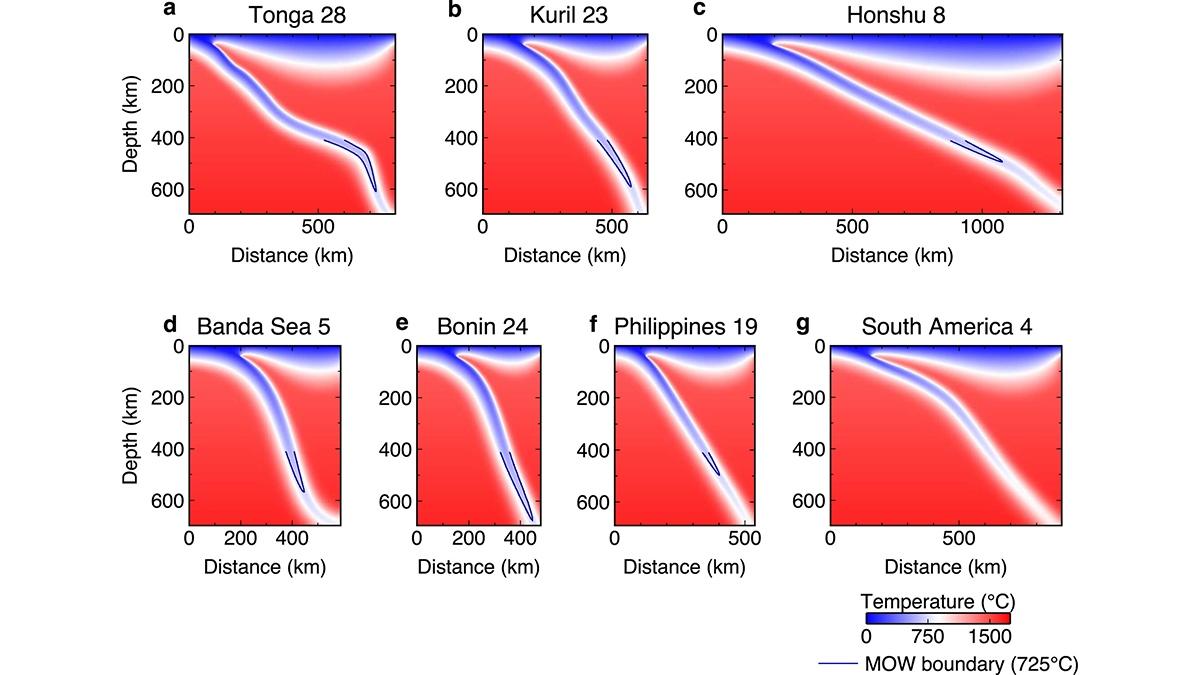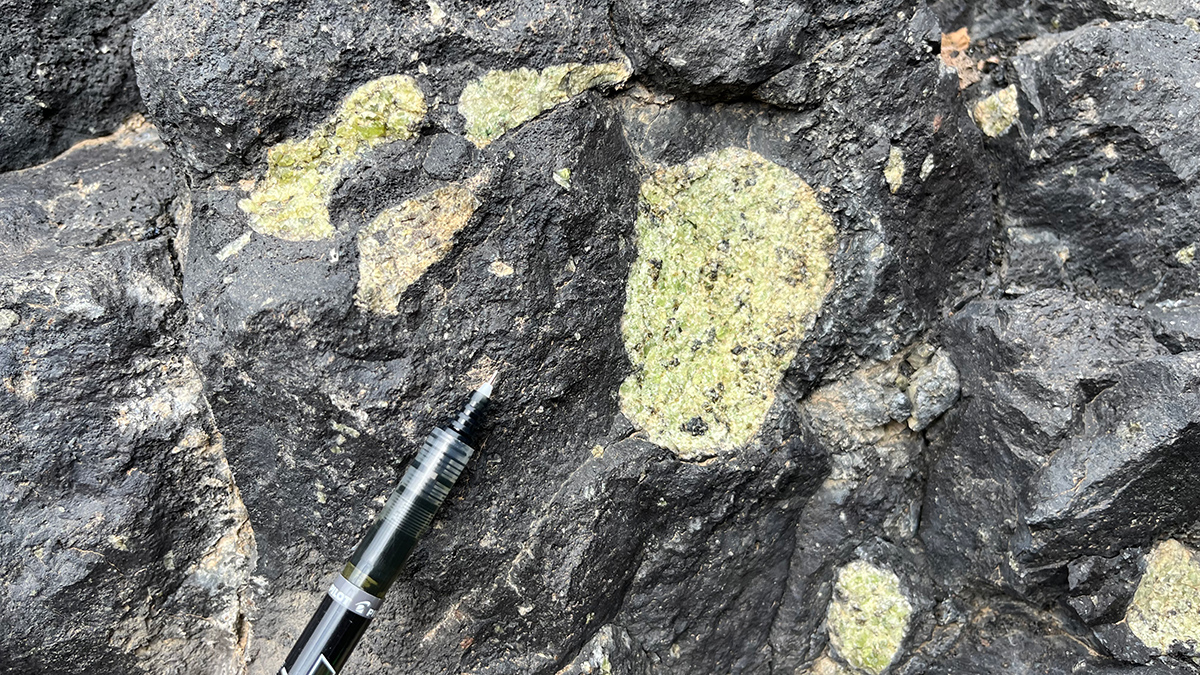A database of frictional properties from IODP drilling materials explores the range of slip spectrum and the generation of slow to fast earthquakes in the Nankai subduction zone in light of mineralogy.
subduction
Changes in Slab Dip Cause Rapid Changes in Plate Motion
Periods of slab shallowing in the South American subduction zone appear to cause decelerations in Nazca plate motion.
New Earthquake Model Goes Against the Grain
Subducting plates are stronger in certain directions than others, which may be a factor in how earthquakes occur and how seismic waves propagate.
Blame It on the BLOBs
For decades, scientists have suspected that large volcanic eruptions have their origins in two mysterious massive regions at the base of our planet’s mantle. Now, it’s been statistically proven.
Finding the Gap: Seismology Offers Slab Window Insights
Studying slow tremors has helped researchers home in on the youngest part of the Chile Triple Junction’s gap between subducting plates, which offers a window to the mantle.
The State of Stress in the Nankai Subduction Zone
The Nankai subduction zone, in southern Japan, has hosted several large magnitude 8+ earthquakes during the last three hundred years. But, how stressed is it right now?
Shedding Light on the Mysteries of Deep Earthquakes
By analyzing forty deep earthquakes around the world, researchers discover the key role of a dual mechanism that allows earthquakes to grow larger and release more stress.
Atomic-Scale Insights into Supercritical Silicate Fluids
Water-induced depolymerization enhances fluid mobility in deep Earth, offering new insights into magma transport and isotope signatures in arc lavas.
The Deep Frontier of Mantle Magma Supply
Compared with crustal magma systems, little is known about the deep sources of volcanic supply chains. Interdisciplinary efforts can help answer key questions about how magma migrates from the mantle.
Water Stored in the Mantle for Millions of Years May Be Linked to Continental Volcanism
New research shows that intraplate volcanism is more likely to occur over areas of the mantle that are more hydrated—particularly those that have been hydrated for a long, long time.

